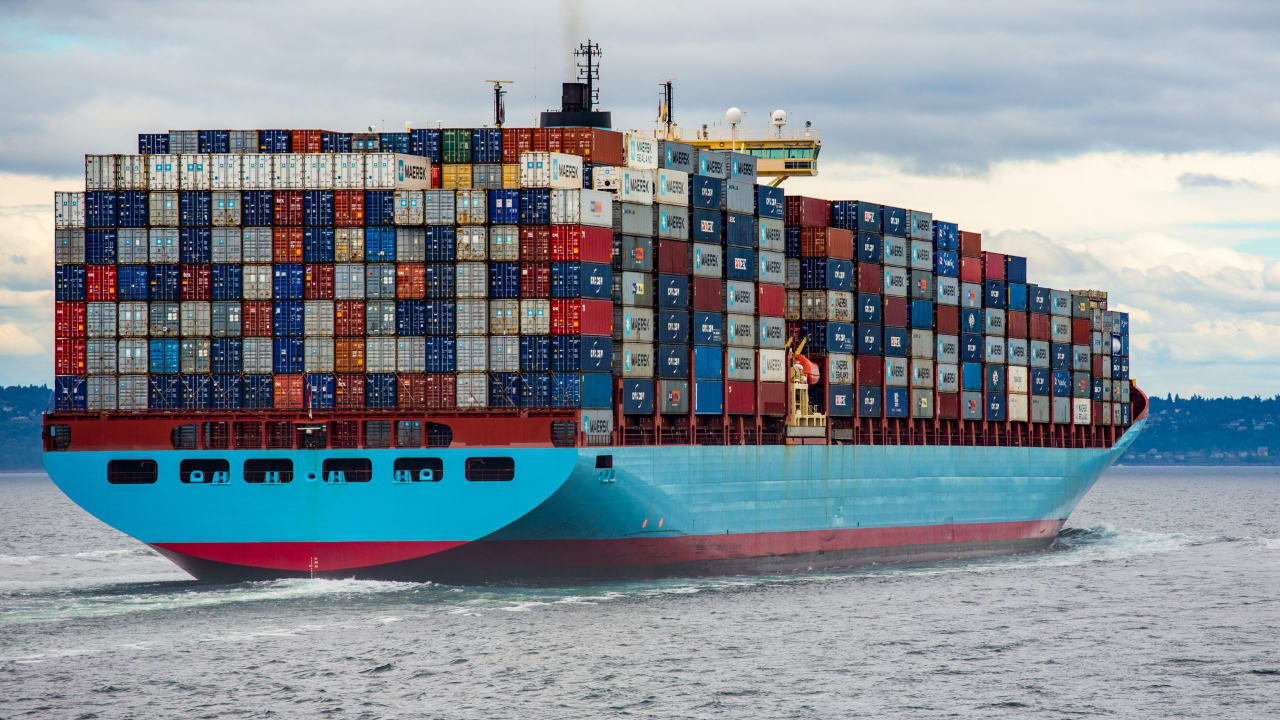Essential Tech for Protecting Winter Shipments

Winter shipping can be a logistical challenge for many companies, but it can be a breeze with the right tools. Shipping in cold weather conditions requires essential tech for protecting winter shipments, and with the right technology, you can ensure your products arrive at their destination safely and on time. Tech for shipping is constantly evolving, and staying up-to-date with the latest cold-weather shipping technology is important.
Winter transportation is a delicate balance between speed and safety. Getting products to their destination quickly is important, but ensuring they arrive undamaged is critical. Regarding cold protection, it’s essential to leverage weatherproofing technology to protect your shipments from harsh winter elements like rain, snow, and wind.
Winter shipping equipment is more than just a collection of tools; it’s a carefully selected assortment of gear that helps protect your products, your business, and your customers. The right equipment can make all the difference and help you stand out.
The first problem that businesses face during the winter is icy roads. This can lead to delivery delays and even accidents. To help reduce the risk of icy roads, businesses should invest in winter tires for their delivery vehicles. Winter tires are designed to provide better traction and stability in icy conditions. Additionally, businesses should ensure that their delivery vehicles have GPS tracking systems. GPS tracking systems can provide real-time updates on the vehicle’s location, so businesses can better plan and adjust routes accordingly.
Another common problem with winter shipments is frozen products. This can be particularly problematic for businesses that ship food or other temperature-sensitive items. To prevent products from freezing, businesses should consider using insulated shipping containers. Insulated containers are designed to keep products at a consistent temperature during winter. Additionally, businesses should consider investing in temperature monitors to ensure that products remain at the optimal temperature during shipping.
Finally, businesses should be aware of potential delays caused by extreme winter weather. To address this problem, businesses should use predictive analytics to anticipate delays and adjust accordingly. By using predictive analytics, businesses can better plan for potential delays and take steps to minimize the impact on their customers.

Read also: Shipping Companies Names and Their Availability Check
Essential Tech for Protecting Winter Shipments
Investing in high-quality winter shipping equipment is one of the most effective ways to protect your shipments. This includes specialized thermal covers, insulated containers, and packaging that are designed to provide an additional layer of protection against the cold. These products are designed to maintain the temperature of your shipments, protecting them from freezing conditions that can cause significant damage to your cargo. Let’s see these tips!
1. Temperature Monitoring Systems
One of the biggest challenges of winter shipping is ensuring that temperature-sensitive goods don’t freeze during transit. Temperature monitoring systems can help you keep an eye on your shipment’s temperature, so you can take action if it falls outside of the safe range. These systems can alert you to potential problems before they become serious, giving you time to make adjustments or take corrective action.
2. Winter Tires
Winter tires are a must-have for any vehicle driving in snowy or icy conditions. These tires are designed with special treads that provide better traction on slippery surfaces, which can help reduce the risk of accidents. They also have a softer rubber compound that stays flexible in cold temperatures, providing a better grip on the road.
Winter tires are specially designed to provide better traction and stability in icy conditions.
3. Backup Power Systems
Power outages are common during winter storms, and they can cause serious problems for shipments that rely on temperature-controlled environments. Backup power systems, such as generators, can help ensure your goods stay at the right temperature despite a power outage. They can also provide power for other essential systems, such as lighting and heating.
4. De-icing Agents
De-icing agents like salt or calcium chloride can help melt snow and ice on roads and sidewalks, making them safer for trucks and delivery personnel. They can also help prevent the formation of black ice, which can be difficult to see and even more difficult to navigate. Using de-icing agents can help reduce the risk of accidents and delays caused by winter weather.
5. GPS Tracking Systems
Winter shipments present a unique challenge for transportation and logistics companies. Not only do they have to contend with colder temperatures, snow and ice on the roads, but the products being shipped can also be affected by the cold weather. Whether it’s perishable goods or electronics, it’s essential to ensure that these goods arrive safely and securely at their destination. One technology that plays a critical role in protecting winter shipments is GPS tracking.
GPS tracking systems have revolutionized the way that transportation and logistics companies operate. By providing real-time information about the location and status of shipments, logistics managers can make informed decisions about routing, delivery times, and potential delays. In the wintertime, this information is even more important as the weather can be unpredictable and cause unexpected bottlenecks or road closures.
The use of GPS tracking can also help protect shipments from theft. With a GPS tracker installed, logistics managers can monitor the movement of their shipments in real-time, and if there is any unauthorized activity, they can immediately alert authorities. Plus, if a shipment is lost or stolen, GPS tracking can help locate the package and quickly recover it.
6. Insulated Containers
Choosing the ideal shipping container for winter shipments can be a difficult process. Essential technology is needed to protect shipments and ensure goods arrive in perfect condition. To ensure cold-weather shipping success, it is important to consider weatherproofing technology, cold protection, and winter shipping equipment.
In order to select the right shipping container, one must consider the type of goods being shipped, the expected temperatures during transit, and the length of transit. It is also essential to consider how the container will be loaded and unloaded during transit. Once these factors are taken into account, the type of shipping container can be determined. Standard steel containers work well in most circumstances, but for extreme low temperatures, wooden boxes and insulated boxes are better options.
To protect shipments in cold weather, specialized winter shipping equipment is necessary. High visibility covers, gel packs, and insulated blankets are all important options to consider. These items should be used in combination with a durable, weatherproof container to ensure maximum protection during transit. Additionally, for longer shipments, a temperature-controlled shipping container can be used to keep goods at an optimal temperature.
Shipping logistics for winter shipments require careful consideration in order to ensure that goods arrive in perfect condition. By choosing the right shipping container and utilizing winter shipping equipment, goods can be protected and delivered without fail. With the right technology, winter transportation can be successful and reliable.
Read: Creative Trucking Business Names Ideas
7. Anti-theft Devices
Winter weather can create additional security risks for shipments. With fewer daylight hours and more inclement weather, thieves may see an opportunity to steal goods. Anti-theft devices, such as alarms or GPS trackers, can help you protect your shipments and reduce the risk of theft. They can also help you recover stolen goods if they are taken.
8. Mobile Communication Devices
In the event of a winter storm or other emergency, it’s important to be able to communicate with your delivery personnel and other team members. Mobile communication devices, such as smartphones or two-way radios, can help you stay in touch with your team no matter where they are. They can also help you quickly communicate changes to your shipping plan or provide updates on the status of your shipment.
9. Remote Monitoring Systems
Remote monitoring systems can help you monitor your shipment even if you’re not physically present. These systems use sensors and other technology to monitor your shipment’s temperature, humidity, and other conditions. They can send alerts if something is amiss, allowing you to take corrective action before it’s too late.
10. Electronic Logging Devices
Electronic logging devices, or ELDs, can help you keep track of the hours of service for your drivers. These devices automatically record driving time and other data, making it easy to ensure that your drivers follow federal regulations. They can also help you plan your shipping routes more efficiently, reducing the risk of delays caused by unexpected driver downtime. Most electric vehicles have these things installed.
11. LED Lights
LED lights are a more energy-efficient and longer-lasting alternative to traditional light bulbs. They are also better suited for winter shipping, as they can withstand colder temperatures and harsh weather conditions. LED lights can help improve visibility for drivers and delivery personnel, reducing the risk of accidents and making it easier to navigate in low-light conditions.
12. Anti-slip Mats
Anti-slip mats can help reduce the risk of accidents when loading and unloading shipments. These mats provide better traction for delivery personnel, even in wet or snowy conditions. They can also help protect the shipment from damage caused by slips or falls.
13. Water-resistant Packaging
Water-resistant packaging can help protect your goods from moisture, which can be a problem during winter shipping. Even if your shipment is not exposed to the elements, moisture can still seep in through condensation or humidity. Water-resistant packaging can help prevent damage to your goods caused by water.
Read: Prefect Food Delivery Business Names Ideas
14. Maintenance Tracking Systems
Regular maintenance is important for keeping your shipping vehicles and equipment in good working condition. Maintenance tracking systems can help you keep track of when your vehicles and equipment are due for maintenance, reducing the risk of breakdowns or other issues during transit. Know the rules of U.S. Customs and Border Protection.
15. Real-time Weather Monitoring
Finally, real-time weather monitoring can help you stay up-to-date on the latest weather conditions. This can help you adjust your shipping plan or take other measures to protect your shipments if severe weather is on the way. Real-time weather monitoring can also help you avoid delays caused by unexpected storms or other weather-related events.
Conclusion
Winter shipping can be challenging, but with the right technology in place, you can ensure that your shipments arrive at their destination safely and on time. From temperature monitoring systems to anti-theft devices, many essential tech tools can help you protect your shipments during the winter months. With the right technology, businesses can ensure that their shipments make it to their destination in the same condition they left in. Keep the best delivery options to avoid potential impacts. Additional protection is always useful.
FAQs
- What is the best way to protect temperature-sensitive goods during winter shipping?
The best way to protect temperature-sensitive goods during winter shipping is to use temperature monitoring systems. These systems can help you keep track of the temperature inside your shipment and alert you if it falls outside of a safe range. You can also use insulated packaging and heating or cooling systems to maintain a consistent temperature.
- What are some common challenges of winter shipping?
Common challenges of winter shipping include unpredictable weather conditions, icy roads, and longer transit times due to reduced visibility and road closures. Temperature fluctuations can also be a problem, especially for goods that require a specific temperature range.
- Can GPS tracking systems help reduce the risk of theft during winter shipping?
Yes, GPS tracking systems can help reduce the risk of theft during winter shipping. These systems can provide real-time location data for your shipment, making it easier to track its whereabouts and recover it if it is stolen. Some GPS tracking systems also come with anti-theft features, such as alarms and tamper-proof packaging.
- How do anti-slip mats help protect shipments during winter shipping?
Anti-slip mats provide better traction for delivery personnel, even in wet or snowy conditions. This can help reduce the risk of slips and falls, which can damage the shipment or cause injury to the delivery personnel. Anti-slip mats can also help protect the shipment from damage caused by drops or impacts.
- Why is real-time weather monitoring important for winter shipping?
Real-time weather monitoring is important for winter shipping because it can help you adjust your shipping plan or take other measures to protect your shipments if severe weather is on the way. For example, you may need to reroute your shipment to avoid areas that are likely to experience heavy snowfall or high winds. Real-time weather monitoring can also help you avoid delays caused by unexpected storms or other weather-related events.






